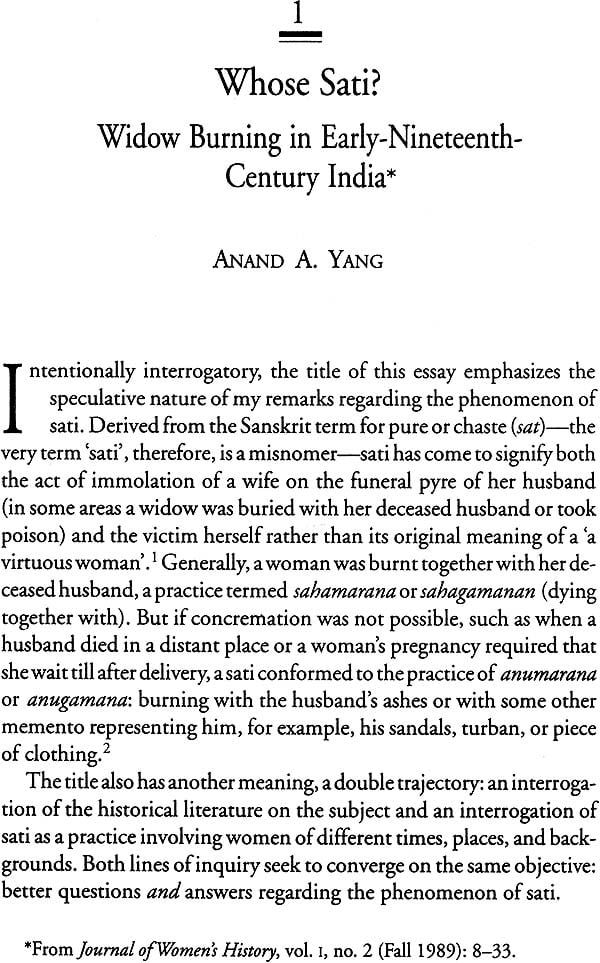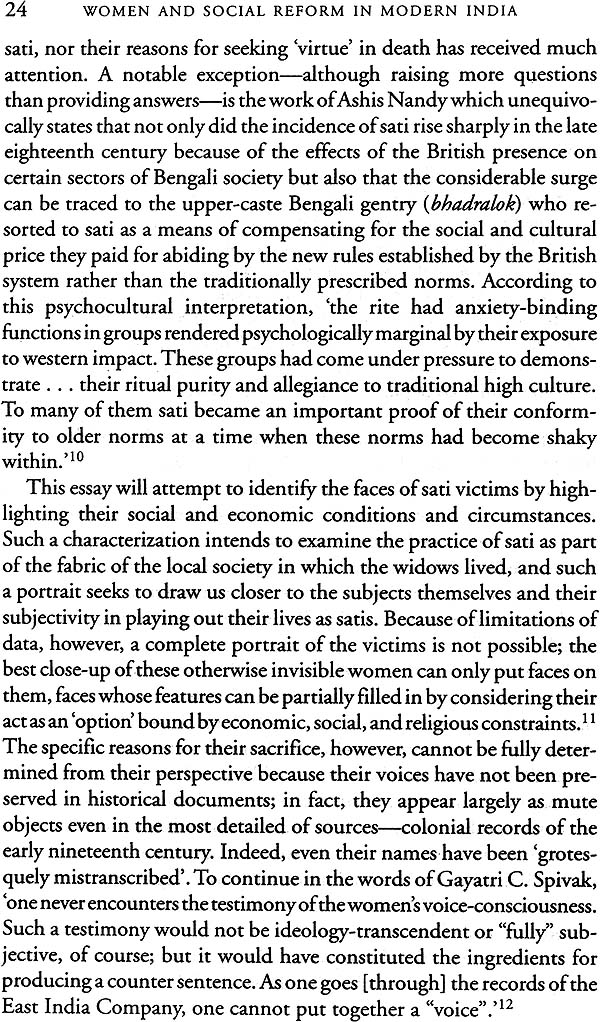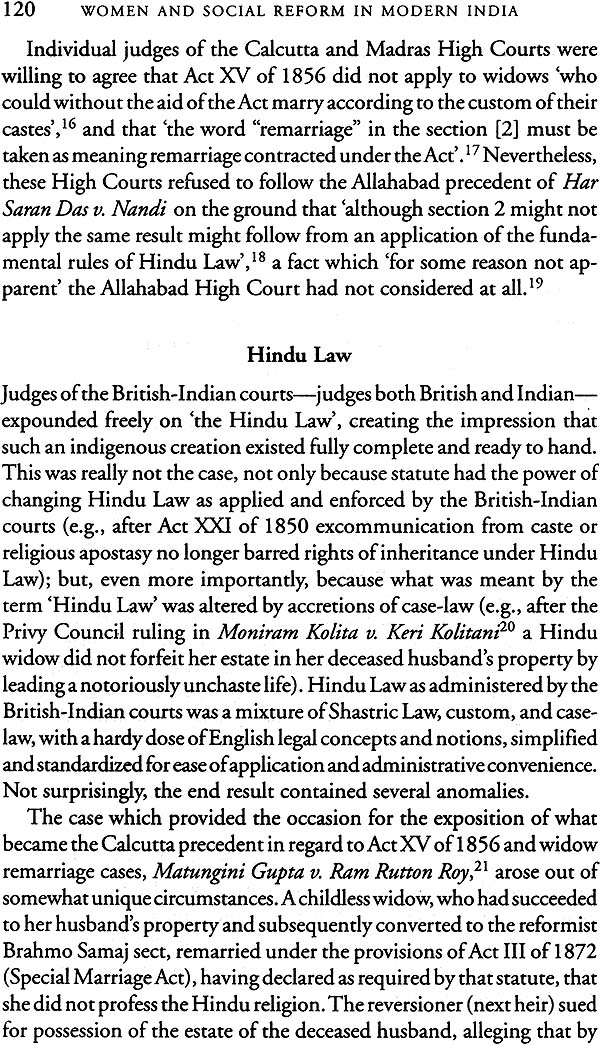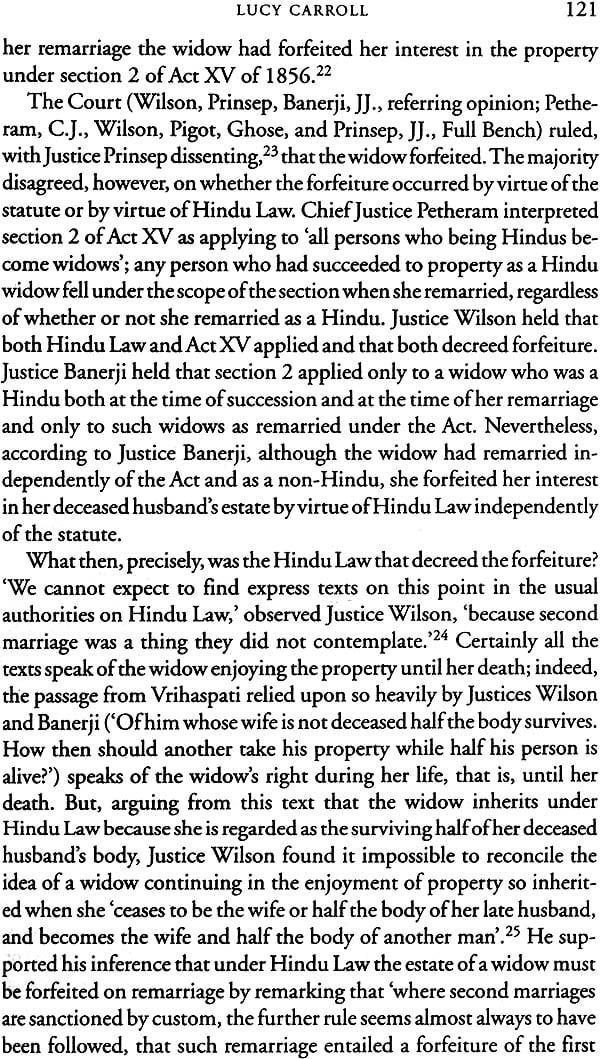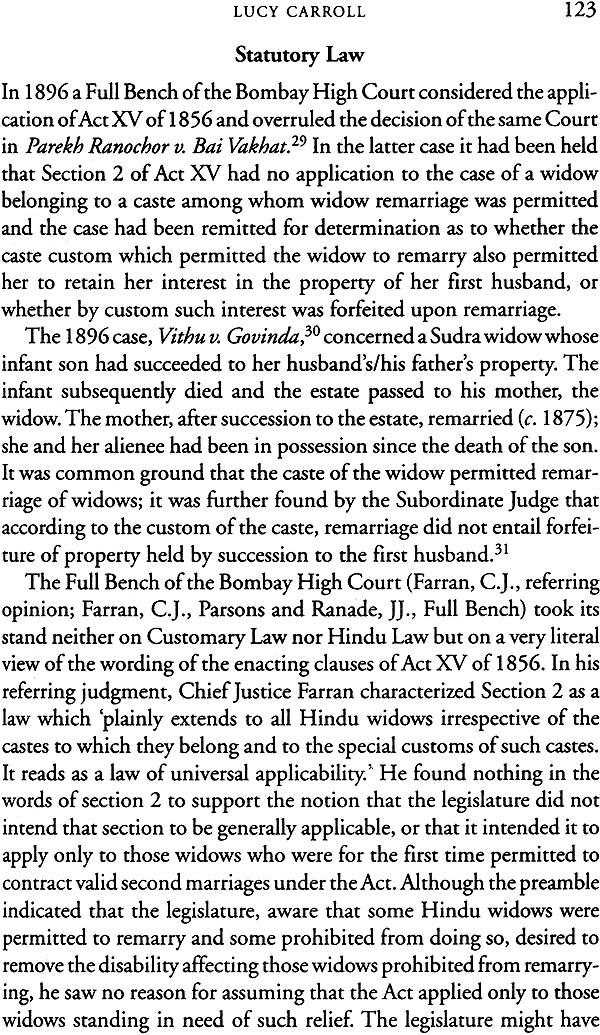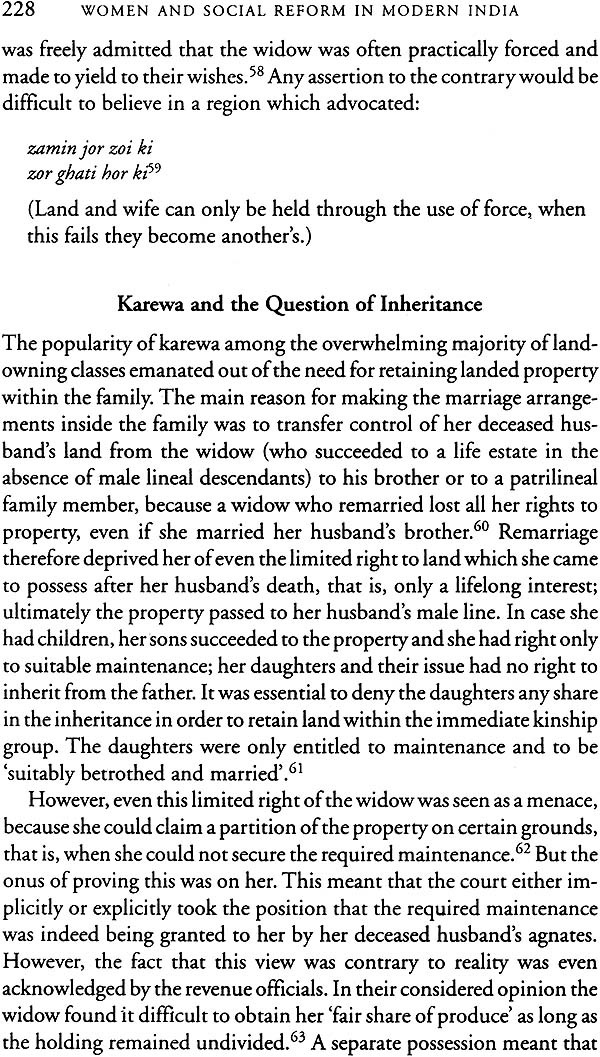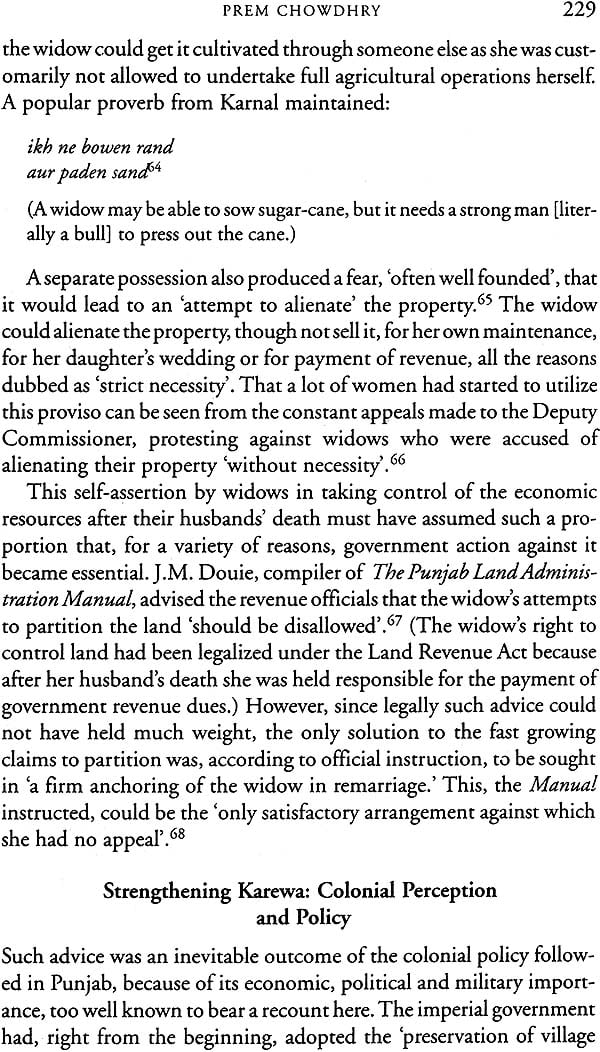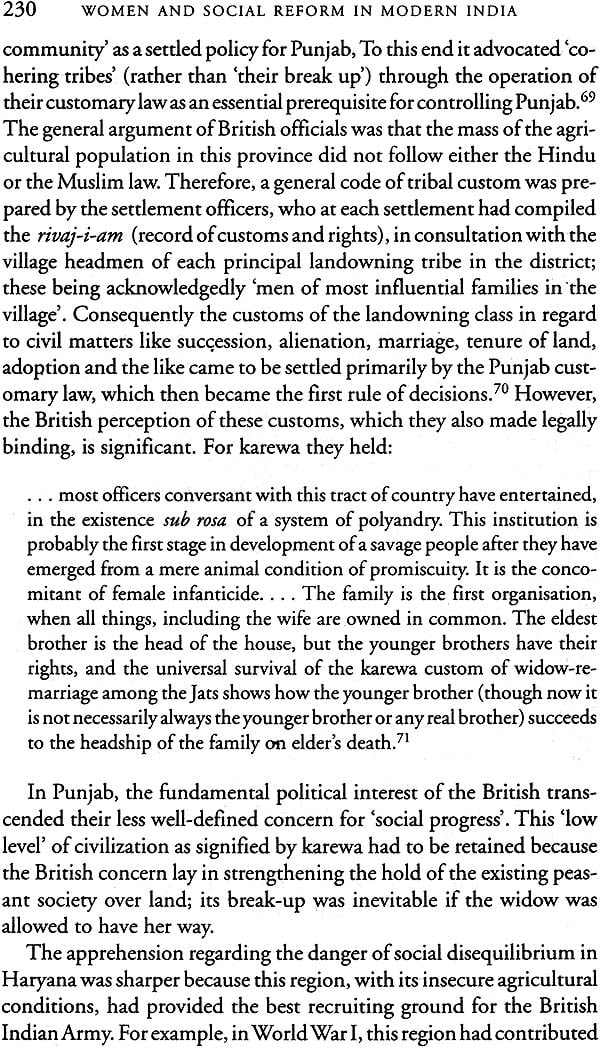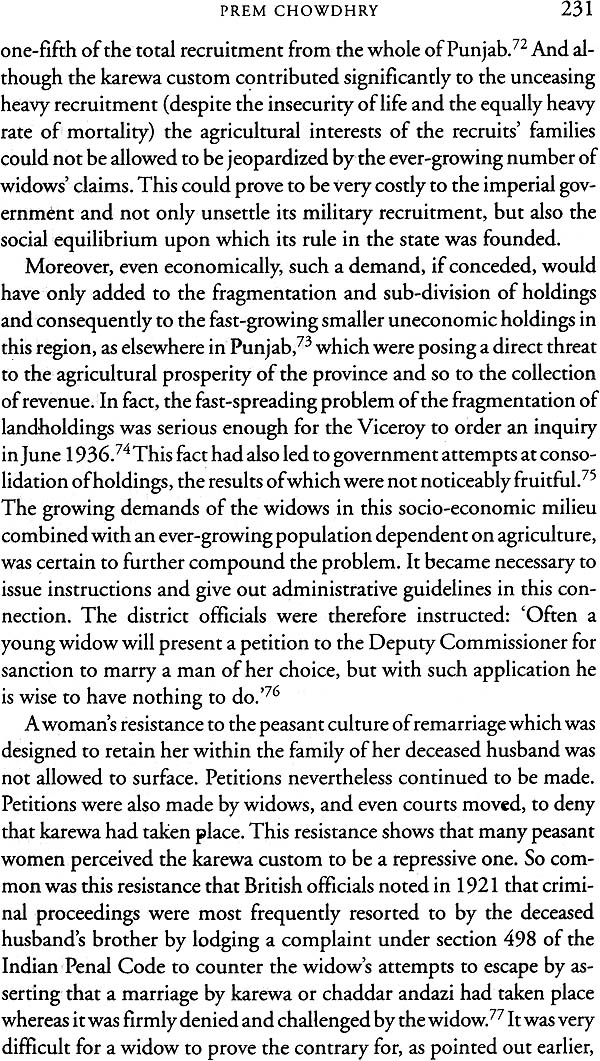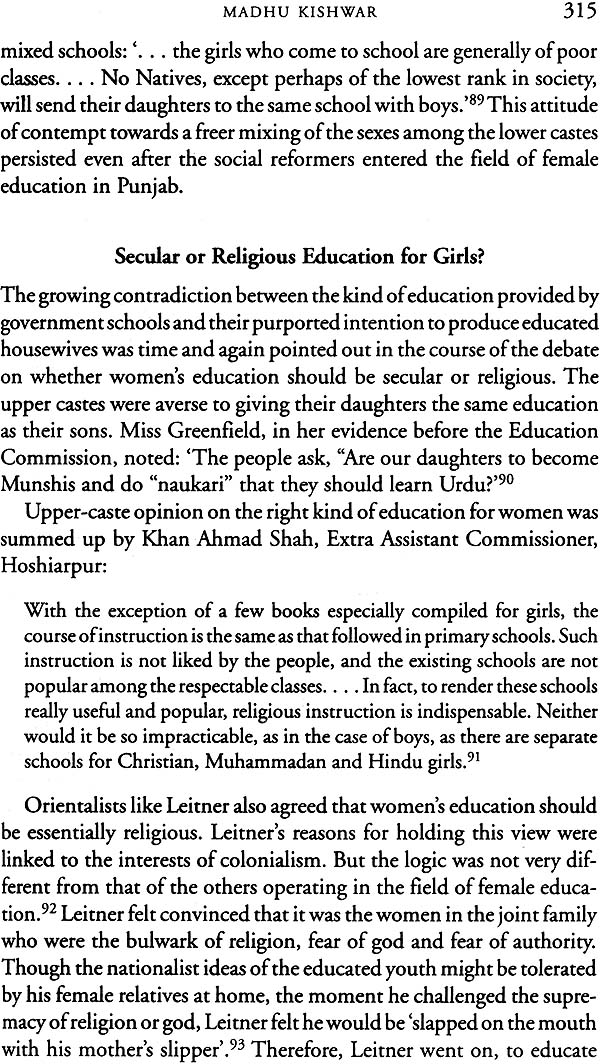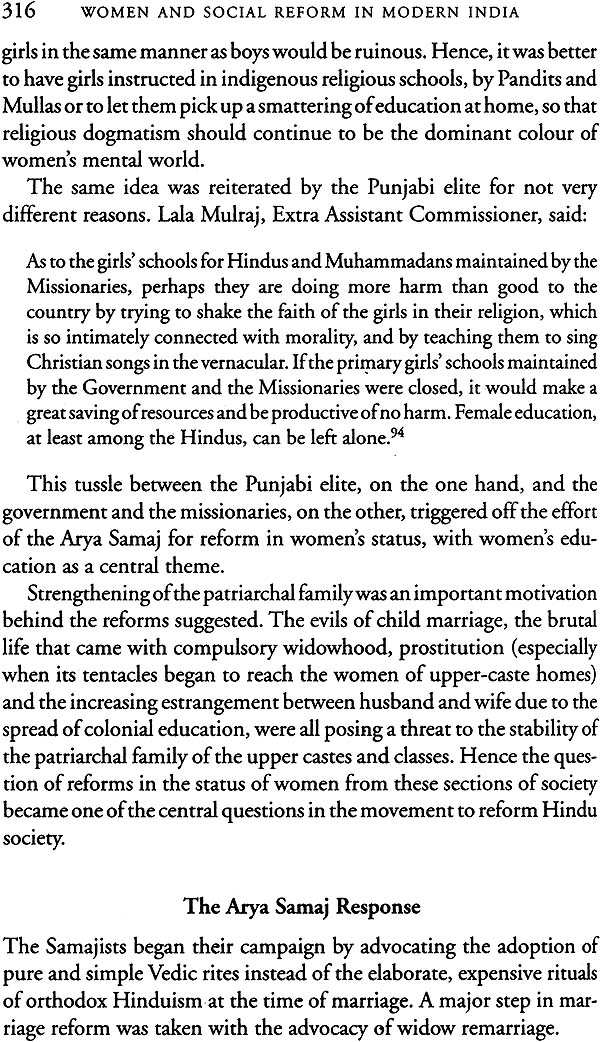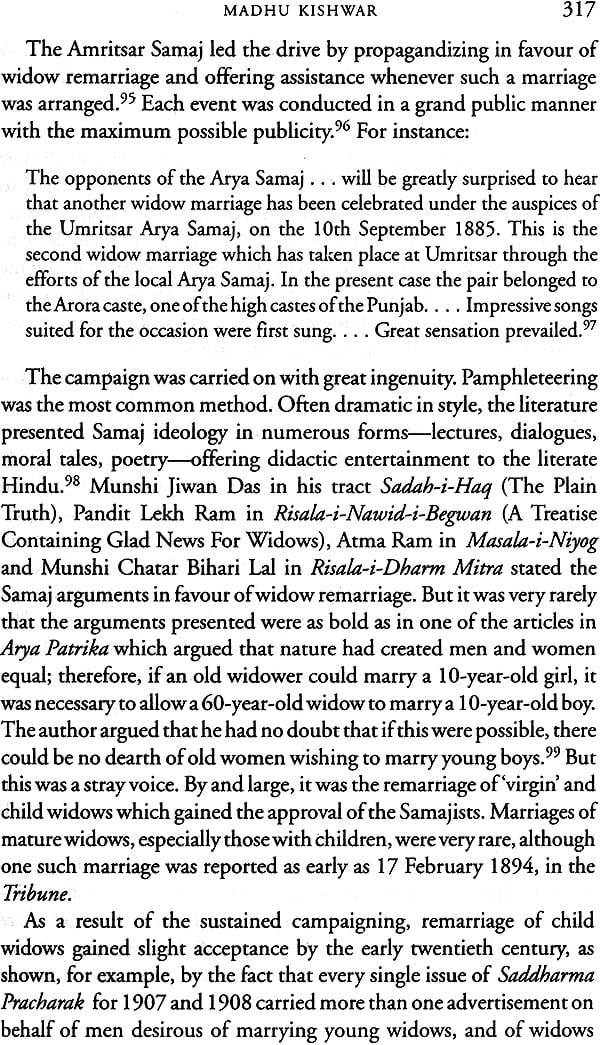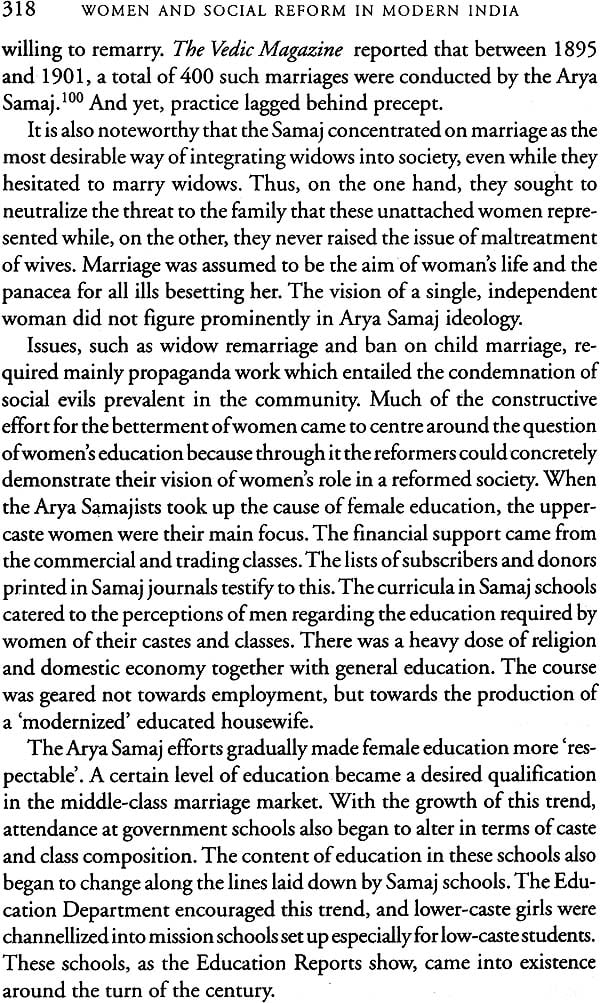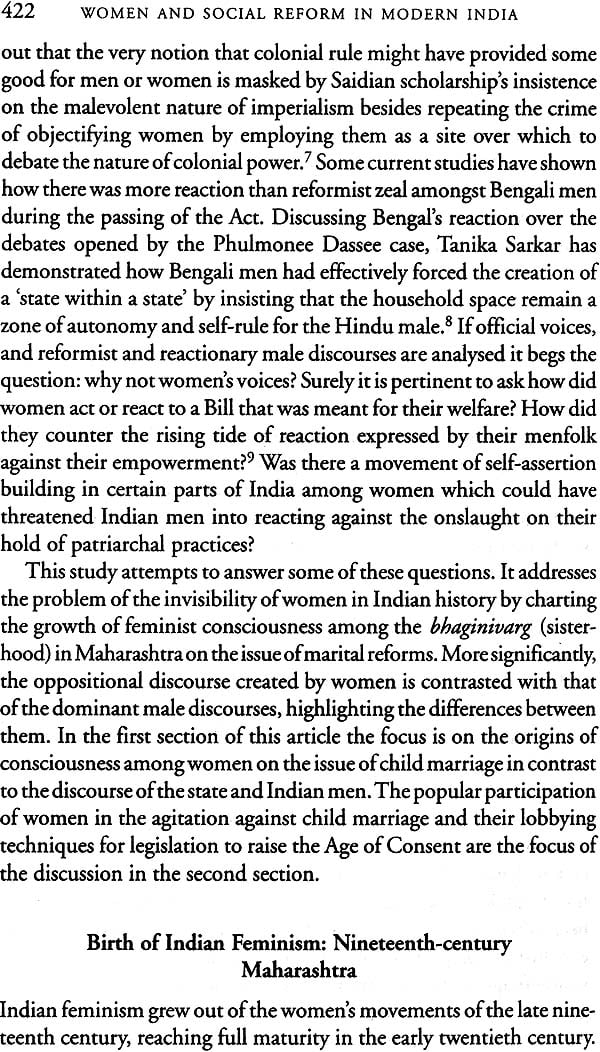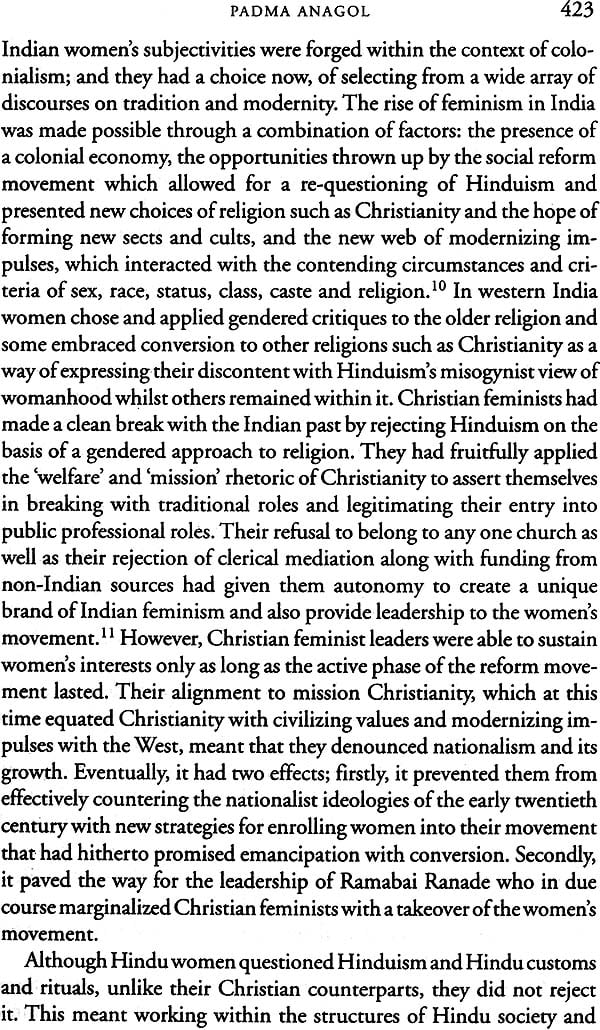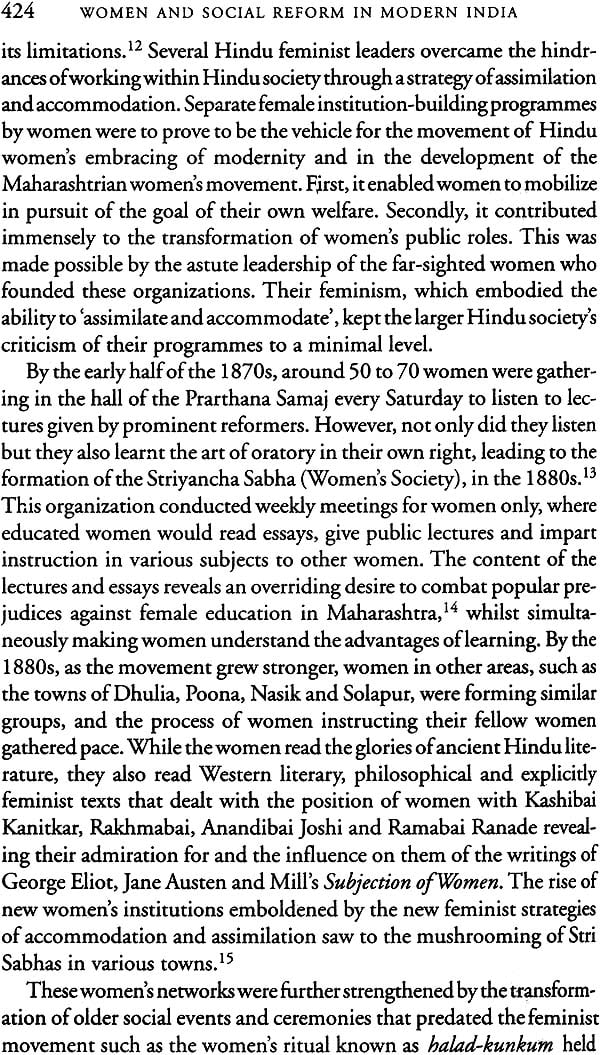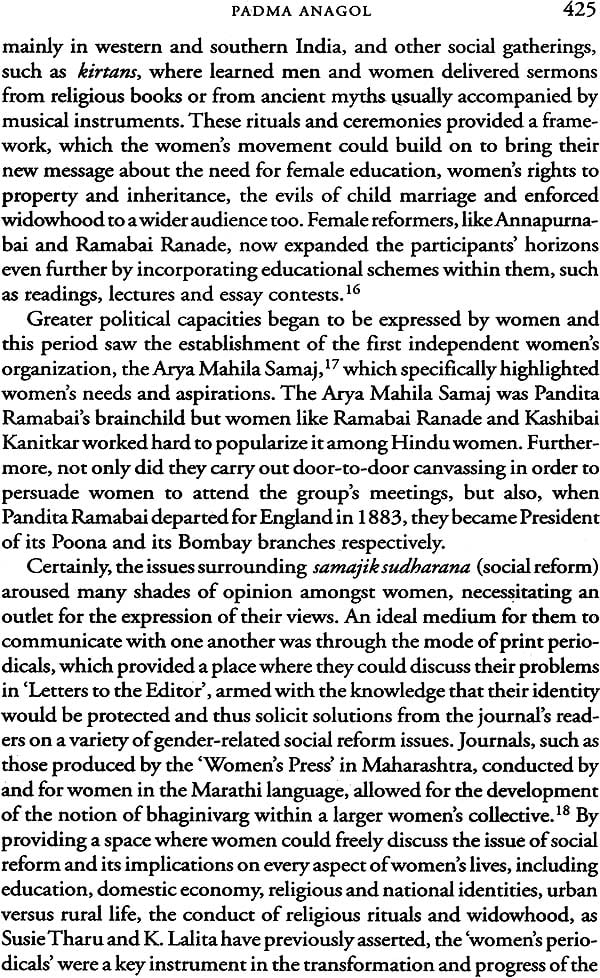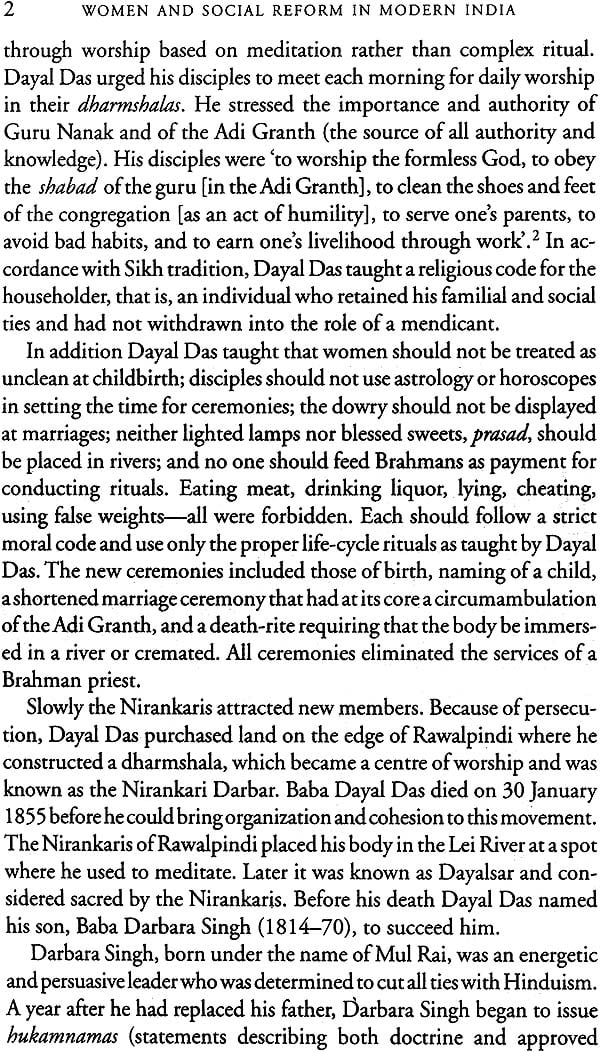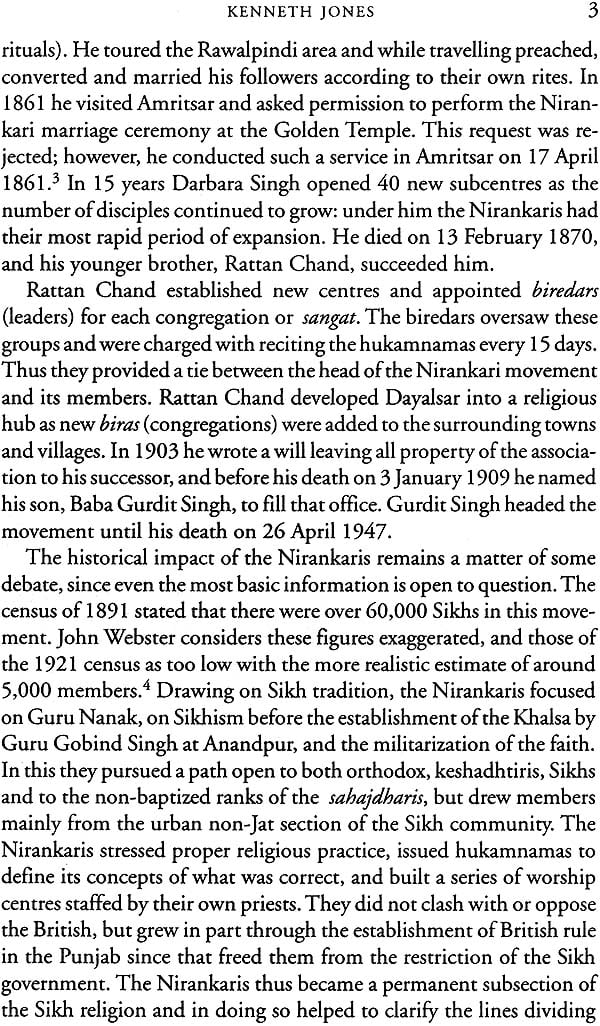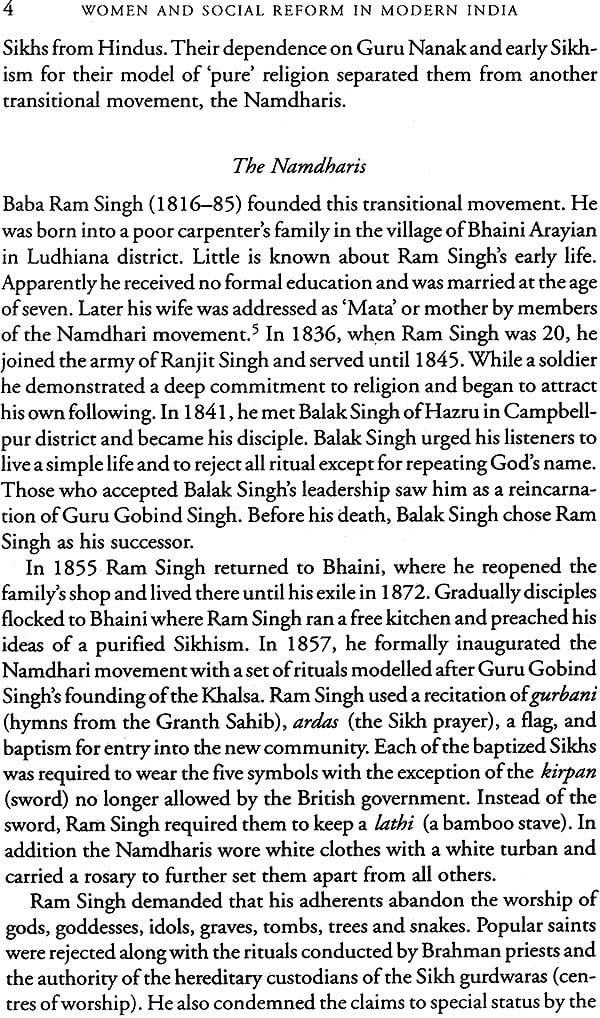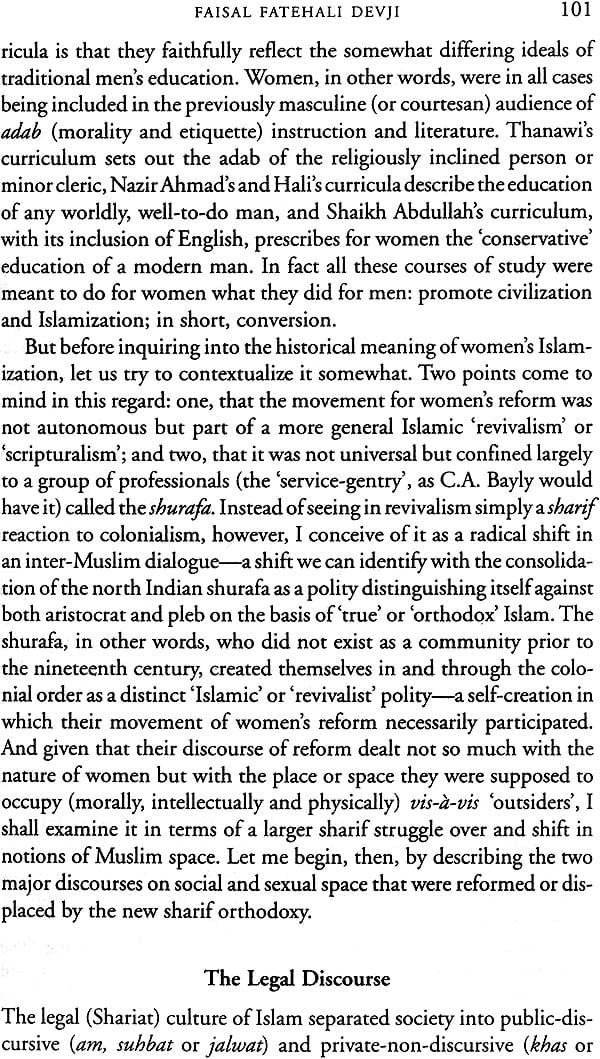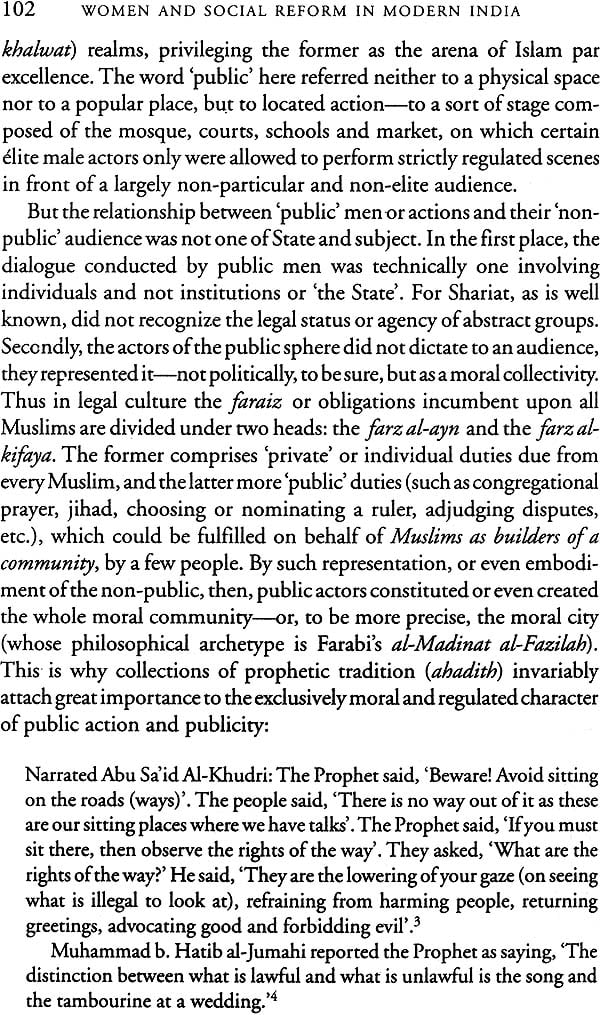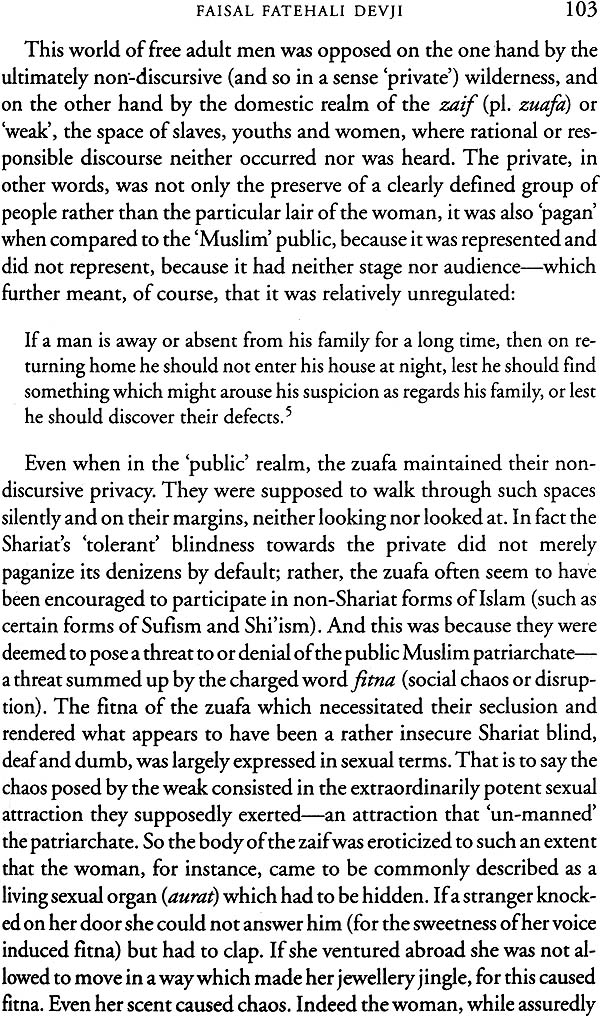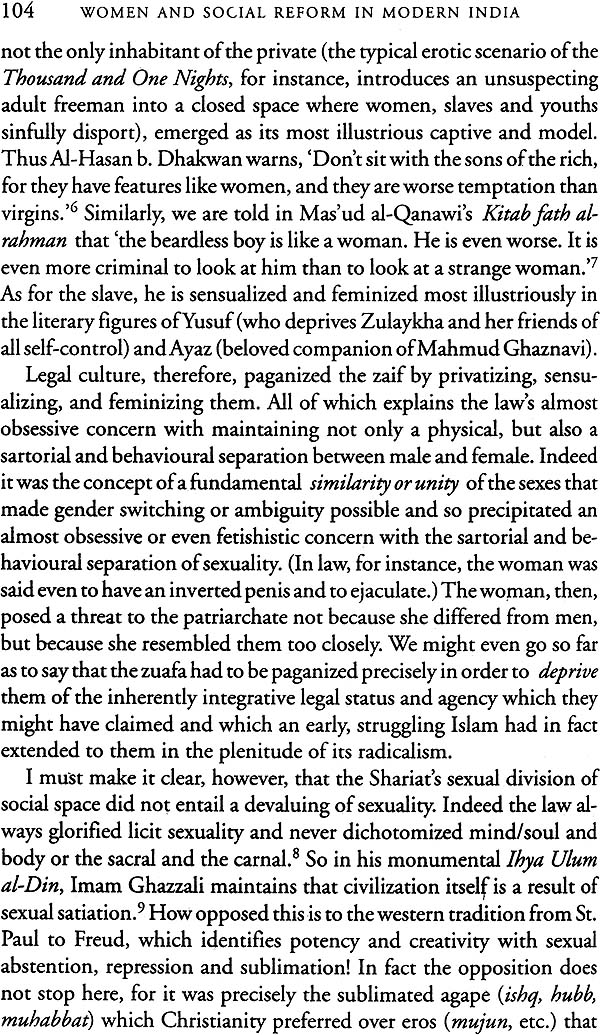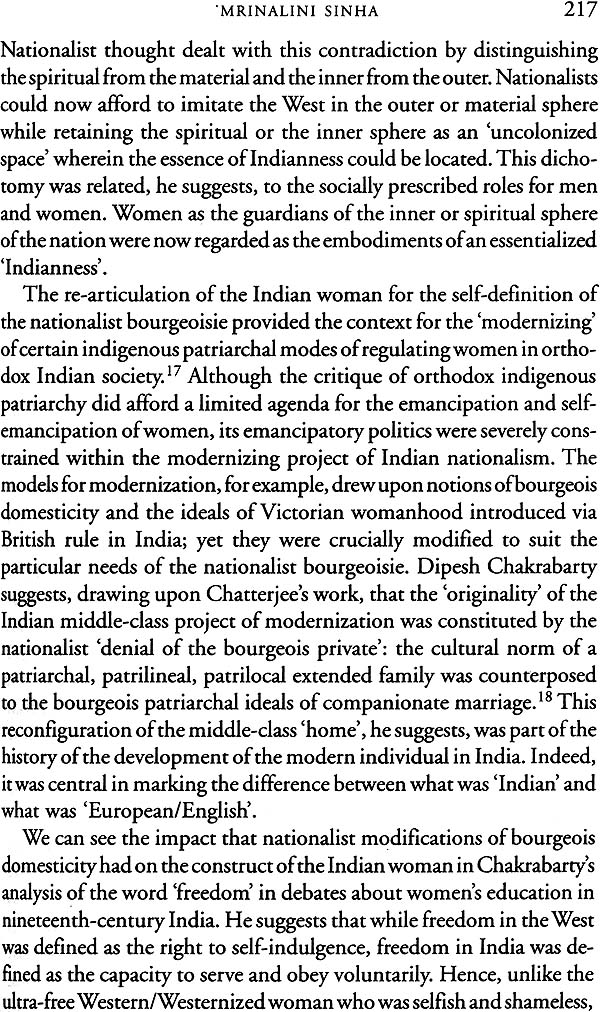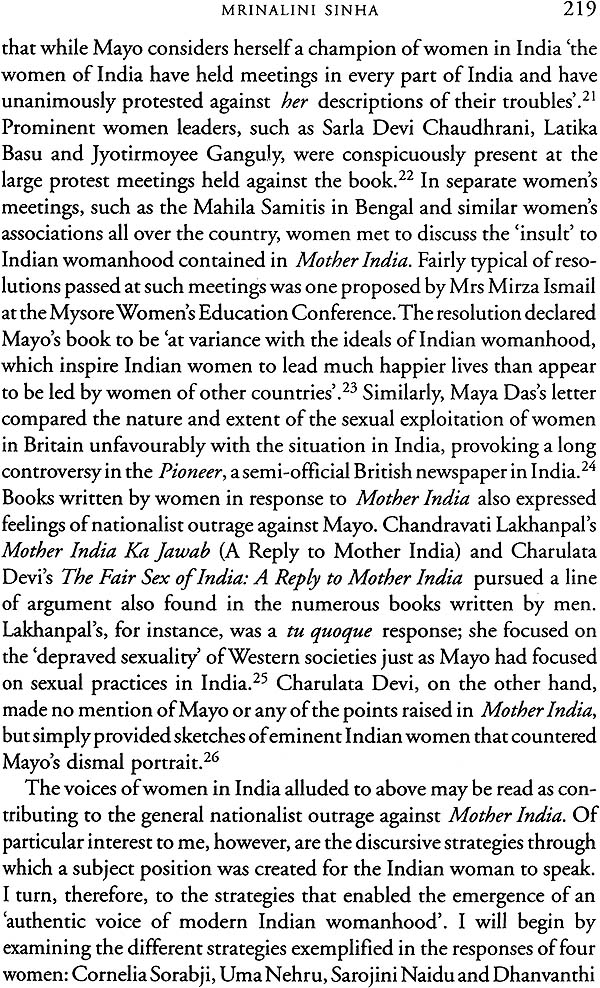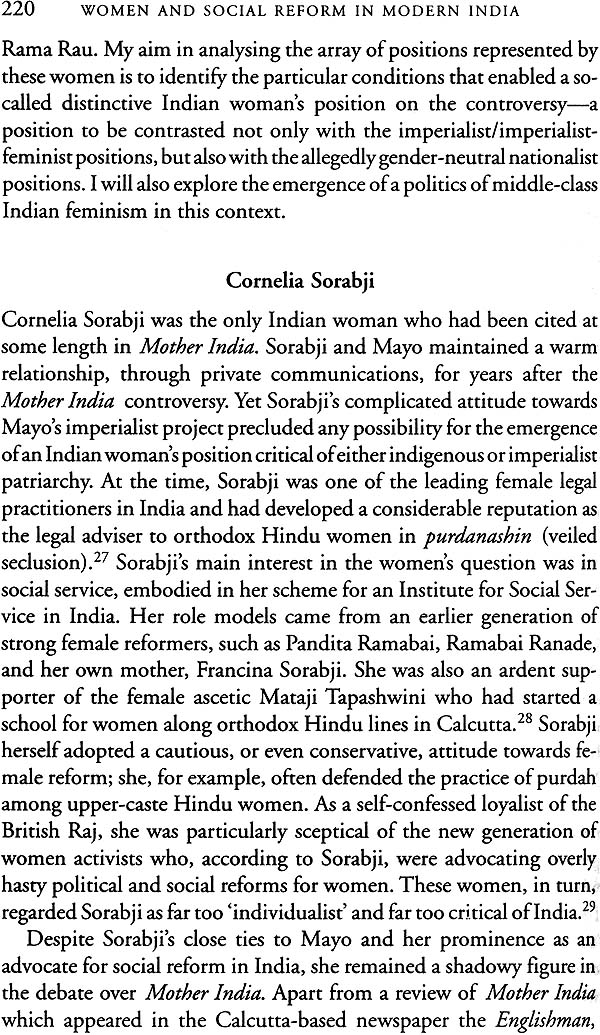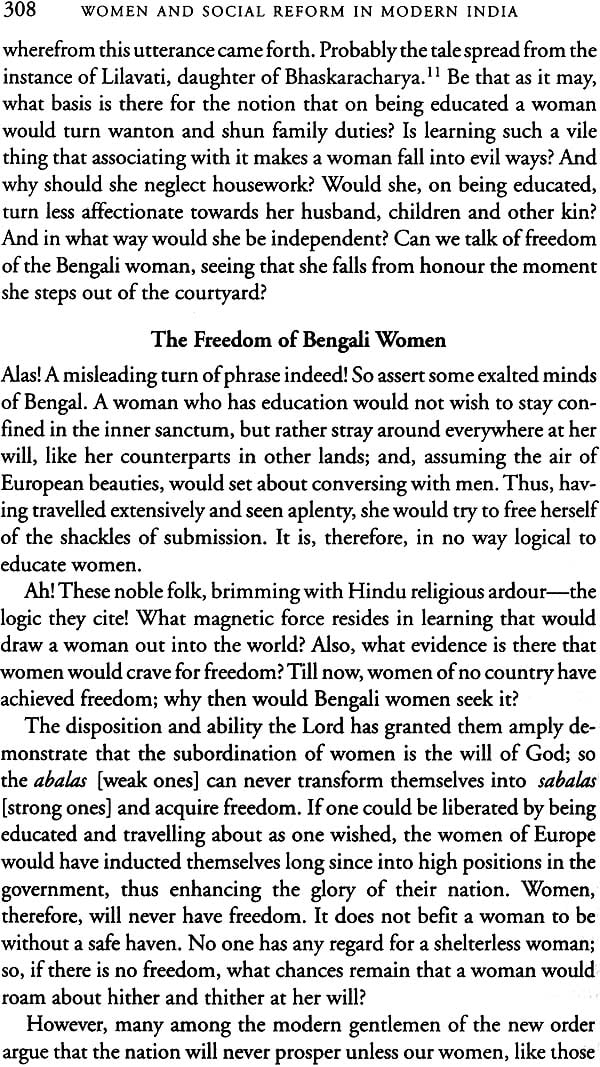
Women and Social Reform in Modern India (Set of 2 Volumes)
Book Specification
| Item Code: | NAG340 |
| Author: | Sumit Sarkar & Tanika Sarkar |
| Publisher: | Permanent Black |
| Language: | English |
| Edition: | 2012 |
| ISBN: | 9788178243276 |
| Pages: | 868 |
| Cover: | Paperback |
| Other Details | 8.5 inch X 5.5 inch |
| Weight | 850 gm |
Book Description
The subject of social reforms has routinely formed a part of Indian history texts. The word ‘reforms’ normally conjures up the names of a few great individuals, invariably Hindu: upper–caste educated men form metropolitan cities, and one or two memorable women. This galaxy of remarkable persons identified and abolished abuses in social life, and their efforts brought about more progressive gender relations.
The editors of the present work argue the need to understand the history of social reforms from a much wider array of perspectives: for example, the connections between specific social abuses on the one hand, and, on the other, system or traditions of gender practices across times, classes, castes, and regions. For instance, when we look at widow immolation or widow remarriage practices, we need to look at the larger domain of gender relations which sanctified immolation or which outlawed widow remarriage: what arguments were used? What aspects of these practices did the reformers ignore? How did orthodox practitioners defend such traditions?
There are also, the editors argue, other curious omissions in the existing literatures: ’Most reforms passed through the grid of state legislation. Yet, there is little engagement even with the law-making machinery ...and far less with the judicial courts that enforced the laws and dealt with disputes around the new laws’.
Such omissions are addressed, and many interesting questions raised and discussed, in this impressive collection of writings.
“The author highlight a breath of scholarship spanning a century which would not be easy to access. ... A wealth of information, critical analysis and new historical insights which raise fundamental questions about tradition and modernity and most importantly, about the teaching of history”
Colonial social reforms have long been a routinized part of our school, college, and university syllabi, written and taught more or less on similar lines at all three levels. Reforms conjure up, inevitably, the names of a few great individuals, almost invariably Hindu: upper-caste educated men from metropolitan cities, and one or two memorable women~ This galaxy of remarkable persons identified and abolished abuses in social life, and their efforts ushered in more progressive gender relations-although we must remember that even though the reforms largely related to women and family relationships, the word 'gender' rarely occurs in the more conventional textbooks. We find little about reforms among Muslims or among 'lower castes'. Attention is centred on upper-caste women's education and on their marriage practices-which were altered largely through new laws: in particular those that banned widow burning, allowed widow remarriage, restricted child marriage.
To explain the emergence of reformers precisely from the early nine- teenth century, three kinds of reasons are invoked in these historical writings: a new colonial education, purveyed through the state and Christian missionaries, that altered and modernized traditional social perceptions; new religious movements that revived and consolidated older humanitarian impulses; and, of course, the sudden availability of a pool of human greatness, eager to save the weak and the helpless. Little significant change has inflected such presentation of this theme over the years, and the social reform chapter usually occurs as a boring though easy interlude, interrupting the more exciting or taxing chapters on nationalist struggle and the colonial economy.
Even within its own terms, such a perspective on social reform could have broadened into an engagement with a number of connected themes. The invocation of the great reformist individuals could, for instance, have expanded into a discussion of their regional, class, and caste specificities, or of the way in which the variations in their social particulars shaped distinctive styles of work or varied the patterns of their social concerns. This, in turn, would have led into a consideration of variations within the new intelligentsia, and of the characteristics of the public spheres that emerged in metropolitan centres with the development of print culture, newspapers, and new modes of communication and association, all of which allowed the reformers to engage in sustained conversations and arguments with one another and with their orthodox opponents in the public domain. A description of the situation in the metropolitan centres would, then, need to expand into a discussion of how, over time, and with the progressive enlargement of the public sphere, smaller towns and new regions were incorporated within the larger debates on the 'women's question', leading to the development of new modes of argument and presentation. We need to know, moreover, what exactly was written about reforms in the news- papers, novels, and tracts, how the matter was performed in the public theatre, how public opinion was formed, pluralized, made contradictory and fractured, swerving people away, finally, from the rule of prescriptive texts and commands that may have been diverse but which, certainly, were authoritative and compelling.
The term 'middle class', so commonly deployed in textbook histories, is also surely in need of some problematization. The term has been in fairly wide use from the nineteenth century, in Indian-language equivalents such as madhyabitta in Bengali. It used to invoke, in those days, an optimistic analogy with the history of the English middle class as the presumed harbinger of economic and social progress. Paradoxically, in striking contrast with the English middle classes, the emergent Indian educated 'middle class' was rooted primarily in rent income from land, where production relations were far from capitalistic. This was combined with professions and office jobs in government or European business firms. The gap between that social group and indigenous entrepreneurship actually widened over time, most notably in Bengal. The middle class, again, would have varied across regions and times, its links with commerce and industry being much more evident in Bombay-and to some extent in the United Provinces-for instance. Recent research also uncovers a kind of lower stratum, a 'low-life of literature' (to borrow a phrase by Robert Darnton about eighteenth- century France), typically clerical in its ambience, its values somewhat at odds with those of the well-known established reformers, writers, journalists, and politicians. The proliferation of cheap print resulted in a mass of tracts, plays, farces, and manuals which disclosed the char- acteristics of this more plebeian underworld. Little of this research, however, has found its way as yet into textbooks.
We have moreover a recurrent use of the word 'debates' in connection with social reforms, without acquiring an understanding of how public debates a very new historical development could take place: Among whom? Through what concrete communication practices and technologies?
Second, when we discuss what was being done for women in those times, we rarely connect the 'abuses' to enduring systems or traditions of gender practices and their internal variations across times, classes and castes, labour patterns, and regions. For instance, when we address changes in widow immolation or widow remarriage practices, we do not study the larger domain of gender relations which sanctified immolation or which outlawed widow remarriage: What arguments were used? What else went with these specific norms that reformers did not address, what was said by the orthodox practitioners who defended such traditions? In other words, an exclusive focus on reformers once they had already been installed as reformers-obscures the milieu they came from, and the large, powerful context of orthodoxy that they had to contend with. The focus on the specific achievements of reformers thus obscures the larger horizon of gender norms and practices.
Third, there is a very curious omission. Most reforms passed through the grid of state legislation. Yet, there is little engagement even with the law-making machinery and with the state under colonial governance, far less with the judicial courts that enforced the laws and dealt with disputes around the new laws. Most surprisingly, there is seldom any mention of the fact that the reforms related to the sphere of 'personal laws', Hindu, Muslim, Christian, and, later, Parsi. The colonial state had marked these out as parts of a domain that would be governed by the religious scriptures and customs of the various Indian communities, within which the state would only intervene if it could be definitively demonstrated that present practices deviated from more authentic norms. The state had demarcated a sphere of personal laws from the late eighteenth century, based on clear-cut assumptions about religious divisions. Colonial courts were instructed to apply such personal laws, and colonial lawmakers, too, rarely stepped out of such boundaries. Even though the entire domain was supposedly governed by both scripture and custom, in cases of conflict between the two, scripture was generally privileged in Bengal: which explains why Rammohan Roy and Ishwarchandra Vidyasagar scoured ancient scripture to locate citations for their views. In Bombay Presidency, on the other hand, local custom was taken far more seriously from the late eighteenth cen- tury. Case law was compiled through detailed investigations among various caste heads; they were also compiled carefully as precedents. In the South, there was a recurrent vacillation between Sanskrit and brah- manical texts, and old vernacular texts, the latter sometimes seen as non-textualized custom. The separate marriage practices of Nayars and Tiyyas, for instance, and their matrilineal residential and property- owning traditions, could be jettisoned as corrupt forms when, from the late nineteenth century, the community men themselves began to agitate for changes in marriage and property relations. In Punjab, customary laws oflandholding 'tribes' were clearly privileged over the different textual traditions of Hindus, Muslims, and Sikhs. Similarly, the version of Shariati law--derived from a twelfth-century Arabic text, the Hedaya-that was made the paradigmatic Islamic law in the country provided no space for different marriage practices among Muslim communities like the Khojas, the Momins, and the Mapillas. It has often been said that the newly codified colonial laws stamped out customary variations and pluralities and froze the legal system. What einerged, rather, was a combination of centralization with sharpened distinctions, not a single uniform pattern.
The legal framework, thus, set limits to the reformist enterprise. Reformers had to invent supple stratagems to bypass or manipulate the boundaries of the law, and so did the orthodoxy. It is pointless, as has often been done, to condemn the reformers for constantly appealing to old texts instead of going beyond them. What we find, instead, is a recurrent tension and play over varied texts, plural interpretations, and the invocation of custom. Instead of a permanent closure, therefore, there were repeated contestations within the realm of the various personal laws, and they never completely settled into a particular mould. By the mid-nineteenth century, for instance, Khoja and Memon marriage practices came to be recognized as a subdivision within Islamic law. Low-caste Hindu widows challenged inheritance regulations under the law of 1856 in the name of plural caste custom. In the interests of stable revenue flow and the quality of recruits from Punjabi Jat landholding communities into the British Indian Army, widows in Punjab were not allowed to marry outside the matrimonial family and were often coerced into levirate marriages even when they would have wanted to retain their widowhood with some property inheritance rights. This, again, takes us into the problems of codification of scriptural citations and of customary usages, of judicial interpretations under the guidance of Brahman pandits and maulavis officially appointed by courts, and of the variety of contentious interpretations that would, eventually, alter the legal-judicial parameters that had been set initially. It should also lead us to a consideration of who exactly manned the courts and the legislatures: what happened when Indians finally pierced these preserves of colonial governance.
Finally, even apart from the invocation of the few remarkable women reformers that there were like Pandita Ramabai the theme of social reforms should take us into the zone of women's own intervention in the public sphere. 31t is generally argued that male nationalists separated the two domains, public and private, into male and female spheres, respectively, achieving a resolution regarding the distribution by allotting the home to the woman and the world to the man with a seeming but counterfeit equity. Actually, women-however few and exceptional did begin to shape public opinion by writing about their lifeworlds even from within the domestic seclusion. Educated at home by fathers or husbands, and benefiting from the growth of print culture and vernacular prose that made writing easier for them, they published their views on women's entitlements, or the lack thereof, often with remarkable criticaliry, We also have the instance ofRashsundari Debi, an upper-caste rural housewife, who very secretly and fearfully taught herself to read and write, and later in the century published an autobiography the first such venture in the Bengali language to recount the history of her self-earned mastery over words. Tarabai Shinde of Maharashtra disclosed the hidden world of women with passionate anger, berating even liberal reformers for failing to address some of the crucial lacks in women's lives.
What is interesting is that such writings found a popular market in the new world of print, and the corpus grew. It was evidently thought that women did possess privileged knowledge about the domestic sphere, and, since social reforms revolved so much around the home, their views were eagerly read, if not always approved of What is also important is the way in which the pattern of their concerns would be allied to, yet somewhat dislocated from, the major preoccupations of male reformers. By and large, male reformers addressed issues of marriage and widowhood, whereas a lot of women writers talked about the pain of premature patrilocality, of the need to acquire an education so that they could be independent of male intellectual tutelage, of the oppressively insensitive relatives that child brides found in their new matrimonial homes. Focusing on these figures-who do not constitute front-ranking reformers-we enter into the details of the domestic sphere and of women's experiences. We are also introduced to a new social category that was a crucial sign of modern times: that of the woman writer.
By the turn of the century, and precisely around the time when the male nationalist resolution into the 'home' as distinct from the 'world' was reaching its zenith with the rise of Extremist nationalism, women were doing even more unusual things. They attended schools which began to develop in the metropolitan cities from the mid-nineteenth century, and which took them away from the domestic confines and the control of kinship networks, giving them a public identity beyond the familial. They were also admitted into colleges and universities, receiving degrees in the sciences and arts, much earlier than English women were allowed those in Britain. Some of them went abroad for medical training and a few of them took up employment as teachers and ?octors .. ?f course, they were fortunate to have exceptionally supportive families and they were blessed with class privilege. The vast majority of girls like their male counterparts-were deprived of literacy because of dire poverty. At the same time, these upper- and middle-class women would earlier have been the most closely guarded of people, repositories oflineage honour, specially obliged to faithfully observe orthodox prescriptions of conduct. The new paradigm of female behaviour not only breached brahmanical and shariflifeworlds. However modestly, it created an alternative trajectory of social respect- ability for women oflower castes and classes who often tended to emulate the behaviour of their social superiors when they could afford it at all.
In the early decades of the twentieth century, their numbers had multiplied to the point when they set up networks among themselves. Gradually, women emerged as leaders in social reform, banding to- gether, writing and petitioning for better health and childcare facilities, temale education and maternal benefits, improved marriage and in- heritance laws, suffrage. The trajectory of social reforms thus blends into the new world of women's political activism.
So we find that the hoary theme of social reforms takes us into en- tirely new domains which, in their turn, get reconfigured through their association with reforms. We enter into older prescriptive texts and schools oflaw and the regime of gender discipline that they prescribed. We consider the variations that caste practices would have introduced into the textual domain. We turn to new modes of public argument and their presentation in literary, journalistic, and performative genres: and into the spheres of legislatures and courts, of lawmaking and judicial disputes. And finally we move away to take a broad look at the new thrusts that develop into thinking, arguing, writing, and relating to the state. In other words, we revision colonialism and modernity in the light of the broad discussion of social reforms.
| Introduction | 1 | |
| VOLUME - I | ||
| PART A: HISTORICAL RESEARCH | 19 | |
| 1 | Whose Sati? Widow Burning In Early-Nineteenth-Century India | 21 |
| 2 | Production Of An Official Discourse On Sati In | 53 |
| Early-Nineteenth-Century Bengal | ||
| 3 | Education For Women | 83 |
| 4 | Law, Custom And Statutory Social Reform: The Hindu | 113 |
| Widows' Remarriage Act of 1856 | ||
| 5 | Caste, Widow-Remarriage, And The Reform Of Popular | 145 |
| Culture In Colonial Bengal | ||
| 6 | Vidyasagar And Brahmanical Society | 172 |
| 7 | Customs In A Peasant Economy: Women In Colonial Haryana | 215 |
| 8 | Silencing Heresy | 249 |
| 9 | The Daughters Of Aryavarta | 298 |
| 10 | Viresalingam And The Ideology Of Social Change In Andhra | 341 |
| 11 | Conjugality And Hindu Nationalism: Resisting | 385 |
| Colonial Reason And The Death Of A Child-Wife | ||
| 12 | Rebellious Wives And Dysfunctional Marriages: | 420 |
| Indian Women's Discourses And Participation In The | ||
| Debates Over Restitution Of Conjugal Rights And The | ||
| Child Marriage Controversy In The 1880s And 1890s | ||
| VOLUME - II | ||
| 13 | Punjab And The North-West | 1 |
| 14 | Muslim Women And The Control Of Property In North India | 20 |
| 15 | Prize- Winning Adab: A Study Of Five Urdu Books | 44 |
| Written In Response To The Allahabad Government | ||
| Gazette Notification | ||
| 16 | Sayyid Mumtaz 'Ali And Tahzib Un-Nistoan: Women's | 70 |
| Rights In Islam And Women's Journalism In Urdu | ||
| 17 | Gender And The Politics Of Space: The Movement For | 99 |
| Women's Reform, 1857-1900 | ||
| 18 | Women's Question In The Dravidian Move! | 115 |
| C. 1925-1948 | ||
| 19 | Multiple Meanings: Changing Conceptior | 138 |
| Matrilineal Kinship In Nineteenth- And T~ | ||
| Century Malabar | ||
| 20 | Women And Gender In The Study Oftribe | 169 |
| 21 | The Second 'Women's War' And the Emergence of | 195 |
| Democratic Government In Manipur | ||
| 22 | Gender In The Critiques Of Col?Nialisrn 3 | 211 |
| Nationalism: Locating The 'Indian Worn: | ||
| 23 | Jawaharlal Nehru And The Hindu Code.: | 243 |
| Of Symbol Over Substance? | ||
| PART B: CONTEMPORARY DOCUMENTS | 275 | |
| 24 | Tracts Against Sati | 277 |
| 25 | The Woeful Plight Of Hindu Women | 288 |
| 26 | From Stripurusha Tulana | 313 |
| 27 | From Miscellaneous Writings | 334 |
| 28 | The Worship Of Women | 376 |
| Copyright Statement | 386 |
